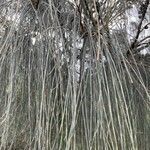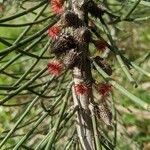A small tree. It grows up to 8 m high. It has many branches. It has a weeping habit. Male and female flowers are on separate trees. Male flowers are brown and on the ends of small branches. The fruit are woody cones. They are 2.5-4.5 cm long and 2-3 cm across.



